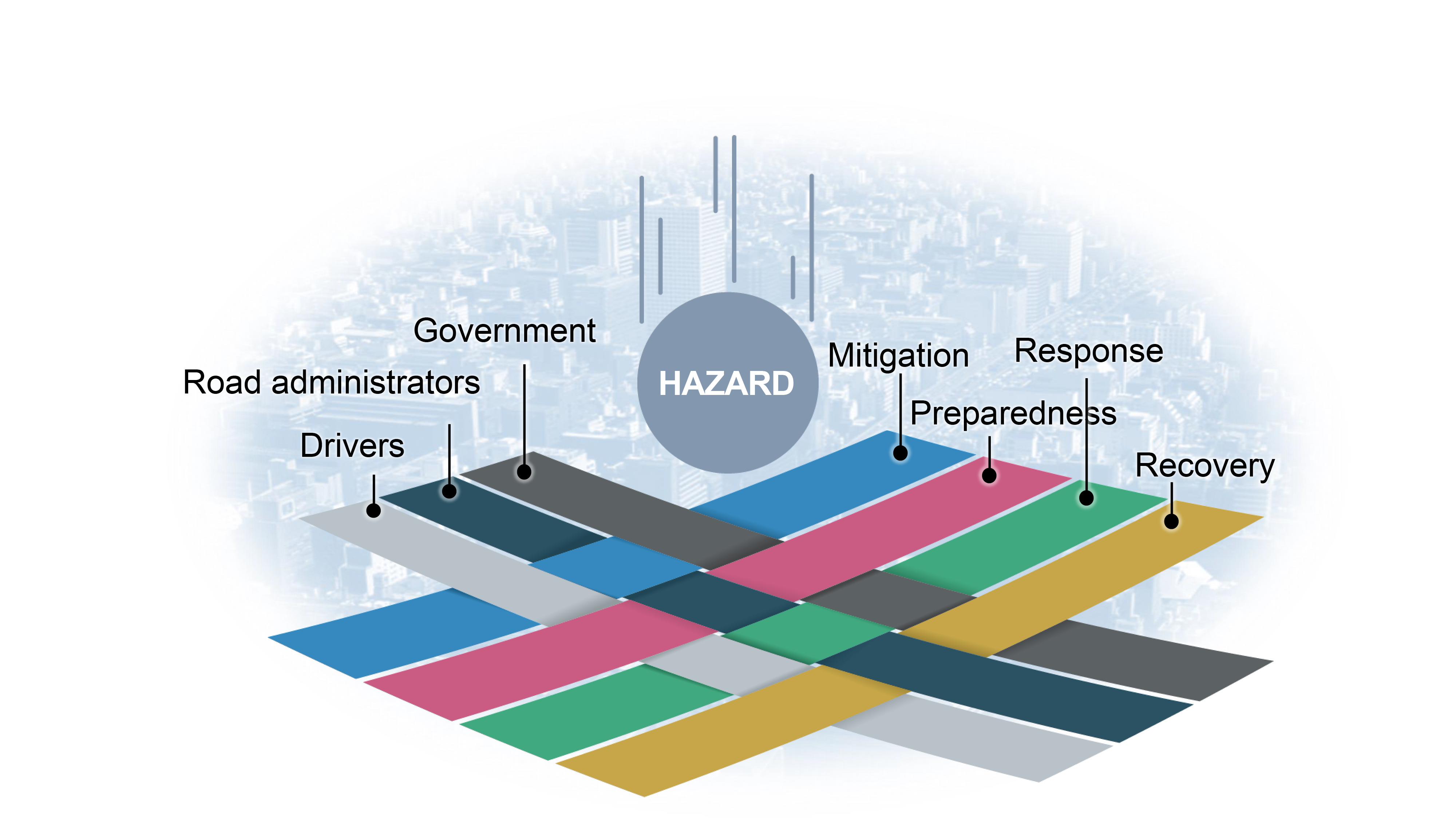
Disaster Management Manual
A manual for practitioners and decision makers!

Disaster Management Manual
A manual for practitioners and decision makers!
In order to prepare for disasters, coordinated action is essential. This requires close coordination among communities involved in disaster management. It is no exaggeration to say that disaster preparedness is a matter of planning for this community coordination.
A disaster management plan establishes community networks and arrangements to reduce the risks associated with disaster preparedness, response and recovery. In particular, preparedness is one of the key elements of the disaster management cycle and needs to be interwoven with the warp and woof. In other words, it is important to work closely with each other in accordance with their respective disaster management roles, responsibilities, capabilities and capacities. The warp and woof threads here are generally as follows like shown in Figure 3.1.
(1) Action plans for all phases of disaster management (prevention, preparedness, response and recovery) based on the development of plans and arrangements based on risk assessment.
(2) Coordination with road managers, national and local governments, and driver cooperation in all phases of disaster management (prevention, preparedness, response and recovery).

This chapter discusses the following items in the preparatory phase of disaster management and details their considerations.
There has been a growing demand to maintain roads functionally to ensure the role of emergency transportation roads and to minimize the time of disruption of supply chains. Therefore, "business continuity planning," which focuses on securing road functions, is becoming increasingly important as an activity to further enhance road function disaster preparedness.
Natural disaster hazards include floods, volcanoes, earthquakes, tsunamis, landslides and so on. Disaster management for natural disasters begins with the identification of natural disaster hazards and their appropriate assessment. In other words, it is important to identify the hazard and assess its risk level. Forecasting technology for all hazards has advanced, and in many cases, the results of damage prediction are compiled into hazard maps that are incorporated into disaster management.
Early warning information provision currently includes those for floods, earthquakes, avalanches, tsunamis, tornadoes, landslides, and droughts. Some of the road authorities provide their own early warning systems for specific disasters listed above. The objectives of early warning information provision can be divided into two categories: damage deterrence and damage impact reduction. The purpose of damage suppression is to minimize the occurrence of disasters by providing information on the possibility of disaster occurrence in advance and preparing for it. This includes rainfall information and typhoon forecasts. On the other hand, "damage impact reduction" is to prepare for the damage that has occurred in order to cope with the situation and reduce the impact of the disaster afterward. It corresponds to the damage prediction immediately after the earthquake. It is desirable to provide both types of early warning information, but it is necessary to consider providing information according to the situation in each country.
In responding to emergencies, it is essential to develop a business continuity planning strategy for various emergencies based on an "all-hazards approach", taking into account all organizations involved in road management, including the national government, local governments, road management companies, and related partner companies. To do this, it is necessary to understand the business continuity capabilities of each organization, consider how to cooperate with each organization in business continuity, and work with each organization to increase its business continuity capabilities. This is discussed in the section on "Business Continuity Planning. It is important to enhance the ability to respond to emergencies during normal operations. For this purpose, "Training (Drill)", and "Exercise" are important.
None of these preparatory considerations can be completed by road managers alone. They are all items that can be accomplished by working in cooperation with other organizations. It is necessary to respond in cooperation with stakeholders, such as the community within the road administrator, the community among road administrators, and customers.